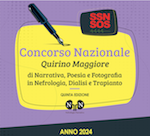Born to run … but also to walk. Motor activity: the first pillar of human evolution.
DOI:
https://doi.org/10.33393/gcnd.2019.511Keywords:
Evolution, Physical exercise, Lifestyle, Sedentariety, Chronic diseases, Endurance activity, Strenght exercises, PreventionAbstract
Our evolution has been based on the ability of moving in order to find food, escape or fight. Afterwards, the first social organizations reduced the risk of aggressions by predators by allowing a shared hunting activity and collection of foods determining, this way, less energy required lifestyle. Thanks to the subsequent progresses in human society, we have therefore moved from hunting and agriculture to industrialization. For about seventy years, an apparently unstoppable progression towards a sedentary lifestyle has been going on, with a gradual loss of some of our body’s functions, up to the so-called "disuse syndrome". The change can also be observed in the type of prevalent pathologies: from acute/infectious/transmissible/epidemic, to chronic/degenerative/dysmetabolic and, unfortunately, increasingly pandemic. Therefore, physical activity can be both a preventive and therapeutic solution. (Healthy_habits)
Downloads
Downloads
Published
How to Cite
Issue
Section
License
Authors contributing to Giornale di Clinica Nefrologica e Dialisi (GCND) agree to publish their articles under the CC-BY-NC 4.0 license, which allows third parties to re-use the work without permission as long as the work is properly referenced and the use is non-commercial.











